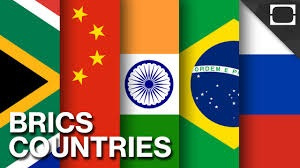Brics university Ranking 2013

China has dominated the first BRICS and emerging economies ranking published by Times Higher Education, or THE, taking 23 slots in the top 100 universities followed by Taiwan with 21. Peking and Tsinghua universities came first and second, and the University of Cape Town third.
India claimed 10 institutions in the top 100 – including six Indian institutes of technology – and Turkey seven, South Africa and Thailand five each, and Brazil and Poland four each in the THE BRICS & Emerging Economies Rankings 2014.
There were top 50 places for Colombia, Poland, Thailand and the Czech Republic, and top 100 places for Chile, Mexico, Egypt, Morocco, United Arab Emirates, Malaysia and Hungary. Countries that did not feature at all in the 22 countries covered by the ranking were Indonesia, Pakistan, Peru and the Philippines.
THE argued that the BRICS – Brazil, Russia, India, China and South Africa – nations alone would provide too narrow a look at universities in emerging economies, and broadened the ranking to encompass 22 countries classified as emerging by the FTSE index.
The result, however, is a mishmash of countries somewhat unexpectedly grouped together for a higher education – as opposed to an economic – comparison.
So there is former global power Russia along with Poland, Czech Republic and Hungary – all in the European Union and so dubiously ‘emerging’ – along with the huge China, India and Brazil, and both middle-income and developing countries in Asia, Africa and the Americas.
The new ranking is drawn from the 2013-14 THE World University Rankings data, and is based on its 13 performance indicators covering the university missions of teaching, research, knowledge transfer and international outlook, a reputation survey of more than 10,000 academics and 50 million citations of academic journal articles.
Data for the THE BRICS & Emerging Economies Rankings were provided by Thomson Reuters from its Global Institutional Profiles Project.
Britain's other world university rankings organisation, QS, will publish a BRICS-only league table later this month.
The results
China’s performance is not surprising, given the phenomenal achievements of its higher education and research in the past decade.
“Of the BRICS, China’s utter dominance should serve as testament to what can be achieved when a nation puts the development of outstanding research and higher education at the heart of its economic strategy,” commented Phil Baty, editor of Times Higher Education Rankings.
“It seems poised to make the most of its talent and to become highly competitive in the new world order of knowledge.
“But the rankings should also serve as a warning to the other BRICS that they risk losing out in the global race if they do not put further energy and resources into developing their universities to compete with the very best,” Baty said.
Perhaps the most surprising result was the poor performance of universities in Russia, not so long ago a global leader in science. Russia had only two universities in the top 100, with its top-ranked Lomonosov Moscow State University placed tenth.
The other six institutions in the top 10 were National Taiwan University (4), three from Turkey – Boðaziçi University (5), Istanbul Technical University (7) and Middle East Technical University (9) – the University of Science and Technology of China (6) and Fudan University (8), also from China.
In the top 20, Brazil’s University of São Paulo came in 11th and Turkey’s Bilkent University 12th, while India’s Panjab University came joint 13 with China’s Renmin University.
After that came South Africa’s University of the Witwatersrand (15), Taiwan’s National Chiao Tung University (16), Colombia’s University of the Andes (17), China’s Nanjing (18), Taiwan’s National Tsing Hua University (19) and Turkey’s Koç University (20).
Russia’s only other university in the top 100 was Saint Petersburg State University (67). As is the case in global rankings, THE points out, “some of Russia’s strongest institutions are too specialist to be included” in university rankings.
It gives as examples the Moscow Institute of Physics and Technology and the Moscow State Engineering Physics Institute. “Both make the top 100 in the world in the physical sciences, but cannot be included in the BRICS list.”
South Africa does well, with five of its 23 public universities in the top 100, and Turkey does even better, said THE, “challenging China’s supremacy in the higher positions”. Its seven universities in the top 100 include three in the top 10 and five in the top 20.
Regionally, Asia claimed 70 of the top 100 places with universities from China, Taiwan, India, Turkey, Thailand, Malaysia and the UAE.
Africa and the Americas both had nine institutions in the top 100. In Africa outside South Africa, there were three universities from Egypt and one from Morocco. And in the Americas outside Brazil, there were two institutions each from Mexico and Chile, and one from Colombia.
Europe had 12 top 100 universities – four from Poland, three each from the Czech Republic and Hungary, and the two from Russia – also a disappointing performance for these institutions residing in the developed world.

Your Comment :